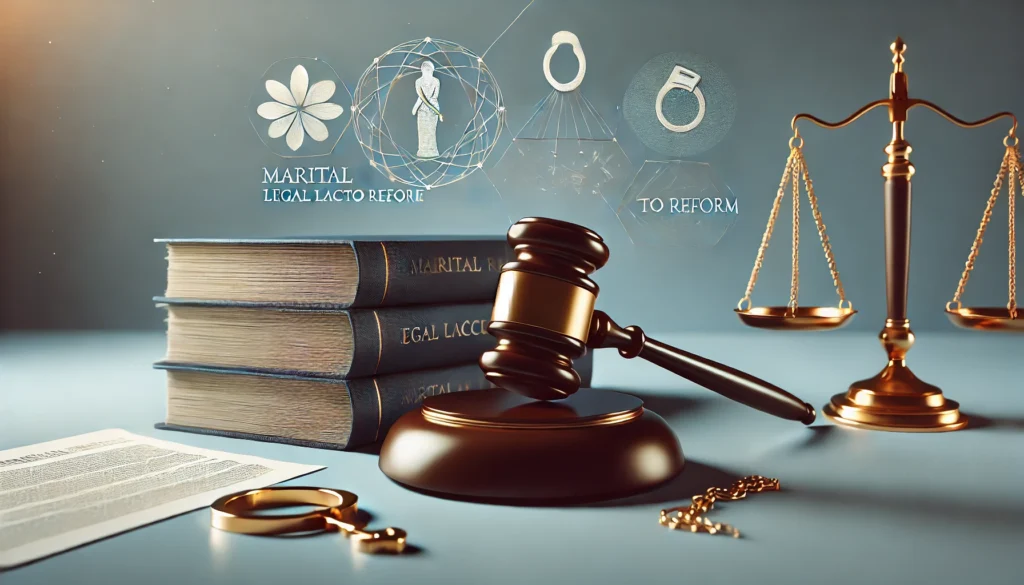Published On: August 18th 2025
Authored By: Bala Nivetha S
SASTRA UNIVERSITY
ABSTRACT
Remember , when Elon Musk told that “ AI can be far more dangerous than you can think”, Artificial intelligence(AI) is being growing rapidly in around the world and it is being a part of every industry from a teaching industry to the pharmaceutical industry. It has no limits in its working area , every fields are welcoming AI for their own spectacular development. In India the AI is been ruling in every fields as stated above, and from being predictive in the finance to predicting the success of the plan AI is been used to. So in general sense , wherever there is crowd the must be a rule and regulations and this AI has been a place in recent days which is been crowded like other areas too. So there must be a regulation needed to have a keep eye on AI fields. So in India, there is need for regulation of AI, where there is so many users and field adopting it there is a need to for a robust regulation in which Artificial intelligence is not misplaced in the hands of any malicious intended person.
Yet, with the increasing placement of AI in key aspects of life comes also a set of legal, ethical, and policy issues. Concerns regarding data privacy, bias in algorithms, responsibility for autonomous decisions, and displacement of human labor are increasingly pressing. In contrast to the European Union or other developed countries that have acted proactively to regulate AI with proper legal frameworks, India continues to function in a regulatory void regarding AI-specific legislation.
In this context, the need to explore and understand the legal challenges surrounding AI in India becomes crucial. This article critically examines the current state of AI regulation in India, identifies key legal and constitutional challenges, and suggests a roadmap for developing a comprehensive and future ready regulatory framework. As India stands at the cusp of an AI-driven transformation, it must strive to strike a balance between technological advancement and the protection of fundamental rights,ethical standards, and democratic values.
UNDERSTANDING ARTIFICAL INTELLIGENCE
What is ARTIFICIAL INTELLIGENCE mean? Where it is not present or even present. When you delve into this area more you don’t know where is tail and where is the head that AI is getting its source of information and how it manages to write a essay less than minute for 10000 words. Anyway in a legal context it is very important to understand the AI concept in order to have a proper knowledge on its regulations too. AI refers to systems or machines that mimic human intelligence to perform tasks and can iteratively improve themselves based on the data collect. However, AI also raises profound ethical, legal and constitutional issues – bias, surveillance, accountability, privacy infringement, and the risk of job displacement, among others. The concept of AI is not monophonic but it included various subfields such as:
- Machine learning (ML): A method where you can learn from data and improve their performance over time without being explicitly programmed. It underlies recommendations engines, credit scoring systems and fraud detection tools.
- Natural language processing(NLP): this branch allows machines to understand, interpret and generate human language. Examples included chatbots, language translation services and even a virtual assistant.
- Computer vision: This enables machines to interpret and process visual informatin from the world, such as identifying faces, analyzing medical images, or navigating self- driving cars.
- Robotics: the integration of AI into mechanical systems, allowing them to perform physical tasks autonomously ranging from industrial robots in manufacturing to robotic surgical instruments.
- Generative AI: A recent and powerful class of models ( GPT, Gemini AI) that can create original text, images audio or even code based on training data, raising profound legal and ethical question around authorship, misinformation and creative rights.
While AI has the great power to increase efficiency, transparency, and innovation, it also brings new levels of legal uncertainty. Autonomous systems tend not to function under direct human control, raising difficult questions of responsibility, transparency, and fairness. For instance, how do we blame an algorithm if it bases a discriminatory hiring decision on some trait? Or who do we blame if an AI-car crashes? Realizing AI not only as a technical device but as a socio-legal agent is essential. Its creation and use cross paths with privacy rights, economic systems, and democratic institutions—resulting in its regulation not only as a technological requirement, but as a legal imperative.
WHY AI NEEDS REGUALTION?
As seen above the users of AI is rapidly growing as a forest fire , thus all the users must be protected and ensure that they have a safe and secured platform which in other side it must be closely kept under surveillance in order to ensure that there is no crime happen in that field. AI presents significant harms and risk to individual rights, economic stability and instiituional trust. There are reasons why it must be kept under surveillance
- Rapid adoption across sectors without legal standards:
India is witnessing the adoption of AI in a unprecedented pace. Whether its AI powered credit scoring by fintech firms, predictive policing software used by law enforcement agencies, or facial recognition systems in public transportation, the deployment in far outpacing the development of ethical or legal frameworks to govern such technologies.
- Protection of fundamental rights:
The constitution of India guarantee fundamental rights such as right to equality ( ARTICLE 14), the right to freedom of speech and expression ( art 19), and the right to life and personal liberty( art 21). With the AI enabled system making decisions that can affect employment, acces to welfare, criminal investigation, or social sevices, the risk of constitutional violation becomes very real.
- Lack of legal accountability:
One of the most pressing challenges posed by AI is the issue of accountability. Traditional legal doctrines assign responsibility based on human conduct and internt. However, AI Systems often function autonomously , raising based on human conduct and internt.
- National security and geopolitical implications:
AI is not a tool for ecnomic growth, it is also a strategic asset in geopolitics. Countries around the world are investing in AI for defense, cybersecurity and intelligence. Without a national AI governance framework, India risks falling behind in the global race. Additionally, lack of safeguards can make Indian digital infrastructure more vulnerable to manipulation, cyber attacks and data exploitation by hostile actors.
In summary, the need for AI regulation in INDIA stems from multiple converging factors: the rapid deployment of AI technologies, growing threats to privacy and equality, gaps in legal liability, and the geopolitical importance of tech soverignity as INDIA aims to become a global leader in AI, it must ensure that its growth is underpinned by responsible innovation, constitutional values, and human-centric governance.
EXISTING REGULATIONS
Despite the fast-paced development and spread of Artificial Intelligence in every field, India does not have a specifically enacted legal framework for its development, deployment, and implications. In contrast to more advanced jurisdictions that have mooted or enacted legislation specifically for AI, India today is based on an haphazard combination of general laws, sectoral regulations, and judicial precedents. This piecemeal system creates essential gaps in dealing with the subtle legal issues that are raised by AI, particularly in the fields of accountability, privacy, bias, and transparency.
1. Information Technology Act, 2000 (IT Act)
The IT Act is the foundation of India’s cyber law landscape. Adopted to deal with electronic governance, cybersecurity, and cybercrime, the IT Act existed before the AI revolution and hence is incapable of dealing with AI-related issues like algorithmic transparency, machine autonomy, or decision-making liability.
Weaknesses: The Act is predominantly reactive, addressing offenses like hacking, theft of data or identity fraud. It does not specifically define AI, and it has no provisions to control automated systems or content produced by AI. It provides no certainty regarding accountability in the event of AI decision-making leading to harm.
Section 79 (Intermediary Liability): This area grants safe harbour protection to intermediaries, but its application to AI platforms that not only host but also create or make independent choices is uncertain.
2. Constitutional Protections and Judicial Interpretation
Constitutional principles have filled the gap in the absence of AI-specific legislation. The following articles are significant:
Article 14 – Right to Equality:
Public decision-making algorithmic bias (e.g., policing, AI-based welfare distribution) can be challenged under Article 14 if it amounts to unequal or arbitrary treatment.
Article 21 – Right to Life and Privacy
The case of Justice K.S. Puttaswamy v. Union of India established privacy as a constitutional right. Nevertheless, as AI systems come to process sensitive personal information, impose surveillance, or determine personal decisions, the implications for privacy expand. The constitutional protection is robust on paper, but enforcement structures are immature.
Article 19 – Freedom of Expression and Assembly:
AI-powered surveillance or content moderation by non-state platforms can limit free speech or non-violent protest, inviting constitutional scrutiny.
3. Personal Data Protection Act, 2023
The Digital Personal Data Protection (DPDP) Act, enacted in 2023, is India’s most consequential legal move toward regulating digital technologies. It regulates the processing of digital personal data, requires user consent, and imposes penalties for misuse. But the Act does not refer to AI.Lacks regulation of algorithmic profiling, automated decision-making, or right to explanation.Leaves significant discretion in the hands of the Data Protection Board, with questions about institutional autonomy.
Although the Act indirectly implicates AI systems that handle personal data, it does not thoroughly cover AI-specific risks such as discriminatory outcomes, non-consensual surveillance, or absence of algorithmic transparency.
4. Sector-Specific Guidelines
Limited AI-related guidance has been issued by some sector regulators:
Reserve Bank of India (RBI): Encourages responsible use of AI/ML in FinTech but lacks enforceable safeguards on explainability, discrimination, or automated rejections in loan decisions.
Insurance Regulatory and Development Authority of India (IRDAI): Promotes use of AI in claim settlement and risk assessment but does not mandate algorithmic audits.
National Medical Commission (NMC): Acknowledges the potential of AI in diagnosis and treatment but has not provided legal or ethical standards for its application.
Such dispersed guidelines provide no uniform safeguard against inherent dangers emanating from AI.
5. Intellectual Property Law
AI-generated material poses very pertinent questions regarding copyright and patent ownership. Indian copyright law acknowledges only human authorship. If an AI system produces original text, music, or painting, it is unclear:
Who owns the copyright — the developer, user, or nobody?
Can AI inventions be patented?
What are the consequences when an AI system inadvertently tramples on existing IP rights? The Indian legal system has not developed to take into account the problems posed by non-human creativity, placing creators, developers, and users in a state of legal uncertainty.
6. Criminal Law and Evidence
AI has implications in criminal law as well:
Deepfakes, voice cloning, and AI-spread falsehoods are capable of being employed for defamation, fraud, or provocation. Although the Indian Penal Code (IPC) encapsulates the underlying offenses, it is not clear with regard to AI as a facilitator of crime.
The Indian Evidence Act, 1872 is not amended to address AI-generated content (e.g., deepfakes) with specific rules of evidence, thus leaving digital evidence questionable in terms of believability.
7. Judicial and Administrative Use of AI
While AI is being deployed in the judiciary (e.g., SUPACE for decision-support), there are no regulations or legal frameworks guaranteeing:
Transparency regarding how these systems affect judicial rulings
Bias testing of AI utilized by courts or enforcement agencies
Public accountability where AI produces errors
This poses a perilous situation where AI could impact justice without facing scrutiny or procedural protection.India’s existing legal framework is simply not designed to address the intricacies of AI. The majority of the existing laws are antiquated, piecemeal, or silent on essential AI issues like automated decision-making, bias, transparency, and accountability. If there is no harmonized and holistic regulatory framework, India stands the chance to let unrestrained AI uptake that can trample over basic rights, manipulate markets, and undermine public trust.This requires not only piecemeal changes to current legislation, but the preparation of a specialized AI law that takes account of the technological, societal, and constitutional conditions of today and tomorrow.
INTERNATIONAL TRENDS AND LESSONS FOR INDIA:
As countries worldwide struggle with the issue of Artificial Intelligence, some have started developing holistic legal and ethical frameworks to ensure the regulation of its creation and application. Although each jurisdiction has its respective legal traditions and socio-political considerations, what they have done so far can be considered instructive for India in determining its own regulatory approach.
This section summarizes major international developments and derives lessons that can inform India’s approach to AI regulation.
1. European Union: The AI Act (2024)
The European Union (EU) has been a global pioneer in regulating AI. Its Artificial Intelligence Act, adopted in 2024, is the world’s first significant broad-based legal framework to govern AI.
- Risk-based approach: AI systems are assigned four levels of risk — Unacceptable, High-risk, Limited-risk, and Minimal-risk — with escalating regulatory requirements.
- High-risk AI (e.g., facial recognition, critical infrastructure, recruitment tools):Subject to stringent requirements regarding transparency, quality of data, human supervision, and cybersecurity.
- Unacceptable-risk AI: Explicitly prohibited (e.g., public-facing real-time facial recognition, social scoring).
- Transparency obligations:Users should be notified when they are interacting with an AI (e.g., chatbots or deepfakes).
Lesson for India: India would be able to take up a similar risk-tiered approach that strikes a balance between innovation and safety. Such an approach provides room for manoeuvre while still providing strong oversight where AI is highly dangerous to rights or public safety.
2. United States: Sector-Specific and Rights-Based Approaches
There is no unifying AI law in the United States but instead sectoral regulations, executive orders, and guidelines. The White House published the Blueprint for an AI Bill of Rights (2022) to provide ethical and procedural guidelines.
- Safe and effective systems
- Protection against algorithmic discrimination
- Data privacy
- Notice and explanation
- Human alternatives and fallback options
Lesson for India: The American model demonstrates the value of ethical codes and enforcement mechanisms in the absence of a single law. India can start with sectoral standards in finance, healthcare, and law enforcement before comprehensive legislation.
3. United Kingdom: Pro-Innovation and Flexible Regulation
The UK strategy, outlined in its 2023 AI White Paper, is centered on:
- Encouraging innovation
- Preventing overregulation
- Developing an adaptive framework through individual regulators
- Instead of one central AI law, the UK uses current regulators (such as the ICO for data or FCA for finance) to implement AI principles in their respective spheres.
Lesson for India: India can follow this distributed regulatory approach, given the presence of organizations such as RBI, SEBI, and IRDAI. Coordination among sectoral regulators will be crucial in order to prevent overlaps or regulatory omissions.
4. OECD and UNESCO Guidelines
The OECD Principles on AI and UNESCO’s AI Ethics Recommendations offer internationally accepted best practices, including:
- Human-centered values
- Fairness and inclusiveness
- Transparency and explainability
- Robustness and accountability
- Democratic oversight
These are subscribed to by nations from a range of legal traditions and may be used as soft law standards for India’s internal policies.
5. Multilateral Cooperation and AI Governance
AI is global by nature — models learned in one nation can be deployed in another; cloud computing frequently transcends borders; and harms from AI (such as disinformation or cyberattacks) are not limited to a single jurisdiction.
Therefore, nations are engaging in multilateral collaboration on AI governance through:
– G20 and G7 dialogue on ethical AI
– Participation of India in the Global Partnership on AI (GPAI)
– Proposals for a global AI treaty along the lines of the Paris Agreement for the environment
Lesson for India: India needs to be an active participant in international governance forums and harmonize its national laws to align with international interoperability standards, particularly for trade, data exchange, and cross-border liability.
India has a singular chance to build an AI regulatory framework that is context-aware, constitutionally oriented, and internationally informed. In learning from the EU, US, China, and the rest, India needs to adapt its framework to:
- Guard fundamental rights
- Encourage responsible innovation
- Prevent digital colonialism
Provide inclusion, especially to marginalized groups and regional languagesIndia must be not only a follower of international trends but also a thought leader — a champion of ethical, open, and democratic AI regulation in the Global South.
A ROAD AHEAD POLICY : A POLICY RECOMMENDATION FOR INDIA:
With Artificial Intelligence emerging as the fulcrum of India’s economic and digital future, it is the need of the hour to shift from a reactive, siloed legal regime to an active, rights-oriented, and innovation- supportive regulatory ecosystem. The recommendations below provide a framework for India to develop a strong and context-aware AI governance framework:
1. Pass a Comprehensive AI Legislation
India should look to enacting a dedicated Artificial Intelligence Regulation Act to offer clarity in law, sectoral concerns, and alignment with international norms. Some of the salient features should be:
- Definitions and categorization of AI systems by risk
- Compulsory ethical and technological requirements for high-risk AI
- Unambiguous distribution of responsibility and liability among developers, deployers, and users
- Protection of core rights, including redressal mechanisms
- Regulatory sandboxes to foster innovation within legal frameworks
- The legislation must be technology-agnostic, principle-based, and sufficiently flexible to keep pace with upcoming developments in AI.
2. Create an Autonomous AI Regulatory Body
India must establish a National Artificial Intelligence Authority (NAIA) — a multi-disciplinary, quasi-judicial agency to:
- Regulate, license, and supervise high-risk AI systems
- Certify algorithmic fairness and safety
- Monitor audits and compliance
- Receive complaints and impose penalties
- Coordinate with sectoral regulators (RBI, SEBI, IRDAI, etc.)
The governing board should be composed of experts from law, ethics, computer science, economics, and civil society to ensure well-balanced governance.
3. Mandate Algorithmic Audits and Transparency
To create public confidence and maintain accountability, India must compel:
- Mandatory algorithmic audits for high-impact AI systems
- Ex-ante testing for bias, discrimination, and unintended consequences
Public disclosure of essential information (e.g., data sources, logic, and purpose) for essential AI tools,User rights to obtain explanations and appeal decisions,This will increase fairness in domains such as employment, policing, credit reporting, and access to government benefits.
4. Safeguard Rights Through Due Process and Redress Mechanisms
Regulation of AI has to be people-centric. Legal protection should comprise:
- Right to explanation of automated decisions
- Right to review of AI decisions by humans that impinge on rights or benefits
- Time-limited redressal mechanisms
- Legal assistance and digital literacy assistance to access remedies
These safeguards should extend beyond public sector applications of AI to private services impinging on individual rights.
5. Foster Responsible AI Innovation
India must balance regulation with innovation. Some of the most important policy levers can be:
Regulatory sandboxes for AI start-ups to experiment with products under limited liability with oversight, Grants and tax breaks for AI innovation geared to public interest objectives (e.g., agriculture, climate, health) Development of public datasets and open AI infrastructure to democratize innovation. Academia and start-ups should be viewed as allies of responsible AI development, rather than mere compliance objects.
6. Establish Ethical AI Standards and Institutional Capacity
India needs to enshrine and enact AI ethics principles like:
- Fairness and non-discrimination
- Privacy and data minimization
- Human oversight and accountability
- Explainability and transparency
- Environmental sustainability
These must steer public procurement of AI and behavior of private actors. Capacity-building should also include:
- Judges’, lawyers’, and bureaucrats’ training in AI ethics and technology
- AI ethics courses in law schools, engineering colleges, and civil service academies
- Engagement of marginalized communities with AI policy discourses
7. Address Inclusion and Accessibility
AI systems should be diverse like India. This entails:
- Conceiving AI systems in local languages
- Making them accessible to people with disabilities
- Closing the urban-rural digital divide via AI education and infrastructure
- Preventing cultural bias in training data and system design
- Inclusivity is not just a value — it is needed to prevent systemic discrimination and technological alienation.
8. Align with Global Norms and Lead in the Global South
India needs to proactively participate in international AI governance, particularly as the voice of the Global South. This can be achieved by:
- Aligning with the OECD AI Principles and GPAI standards
- Championing data sovereignty, algorithmic equity, and inclusive access in multilateral platforms
- Backing an international treaty or global convention on AI governance and ethics
India can lead by exporting ethical AI frameworks, not technology alone — enabling a fair and open global digital order.
India is at a critical juncture in the world AI revolution. With its robust constitutional principles, thriving tech sector, and pluralist society, India is best placed to craft an AI regulatory paradigm that preserves rights, encourages innovation, and boosts trust. The path forward needs to be walked with vision, prudence, and cooperation — among lawmakers, technologists, civil society, and citizens.
CONCLUSION
Artificial Intelligence is no longer a technology of the future—it is a defining force of the present. From how we work and learn to how we govern and deliver justice, AI is increasingly influencing core aspects of human life. In India, this transformation presents both extraordinary opportunities and significant legal challenges. While AI can drive efficiency, innovation, and growth across sectors, it also poses real threats to individual rights, democratic accountability, and social equity if left unregulated.The current Indian legal and policy framework is grossly inadequate to deal with the complexity and scale of AI’s impact. A patchwork of outdated laws, sectoral gaps, and the absence of enforceable rights makes it difficult to regulate AI meaningfully. At the same time, international models from the EU, US, and others provide valuable templates that India can adapt to its unique constitutional, economic, and social context.
This article has examined the foundational challenges—from transparency, bias, and privacy to liability, intellectual property, and surveillance—and emphasized the urgent need for a comprehensive, principle-driven regulatory regime. A forward-looking AI law, supported by an independent regulatory authority, ethical guidelines, and inclusive innovation policies, is not just a policy aspiration but a democratic necessity.India’s approach must be rooted in its constitutional ethos: safeguarding dignity, equality, and liberty while embracing the benefits of emerging technologies. The road ahead is complex, but with the right vision, collaboration, and resolve, India can emerge not just as a global leader in AI development—but also as a pioneer of ethical, inclusive, and human-centered AI governance.




